
Classic Europa
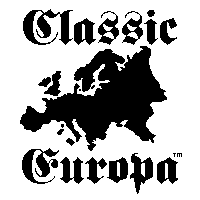 Welcome to Classic Europa!
Welcome to Classic Europa!
Classic Europa is an entirely unofficial, fan-based celebration of the classic Europa games published by Game Designers’ Workshop (GDW) and Game Research/Design (GRD), from 1972-2000, plus selected honorary Classic Europa games. This website features articles, scenarios, designer's notes, and more on Classic Europa and related topics.
Classic Europa also features a Classic Europa Group at IO Groups for the discussion of Classic Europa topics, at https://groups.io/g/classiceuropa.
new!
Soviet Mountain Rifle Divisions

Soviet Mountain Troops
Organization of Soviet Mountain Rifle Divisions, 1936–1945 covers the organization and weapons of the Soviet mountain rifle troops from 1936 through 1945. The campaigns of these troops during the war with Germany are sketched out. An appendix also briefly covers the organization and campaigns of the Soviet mountain cavalry divisions, cavalry units specially organized for mountain operations.
new!
German and Soviet Punishment and Probation Units of World War II
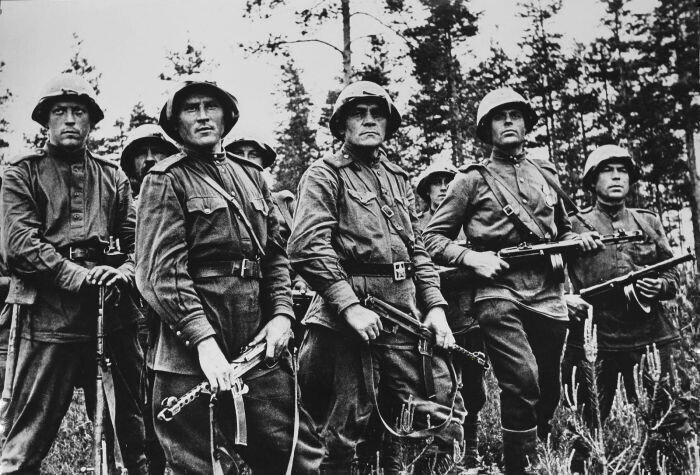
Possibly the Soviet 8th Shtraf Battalion, 1945
German and Soviet Punishment and Probation Units of World War II: Many European countries fighting in World War II often needed more soldiers than they could recruit through conventional means, such as conscription or calls for volunteers. Some of these countries tapped alternative sources of personnel that normally were not allowed to serve as combat soldiers: civilians who had been convicted of crimes, and soldiers who had been court-martialled for military offenses or were being punished for various infractions. The two major totalitarian powers in the war, Nazi Germany and the USSR, used these sources of soldiers to a great extent. They also had a third source to tap: German citizens in German concentration camps or inmates in the Soviet GULag.
new!
Bulgarian Order of Battle by Carlos A. Pérez Melón

Map of Bulgaria, 1933-42; Source: United States Holocaust Memorial Museum
This is a Europa-rated order of battle for Bulgaria in World War II.
new!
Soviet Russia and the USSR, 1917–1941
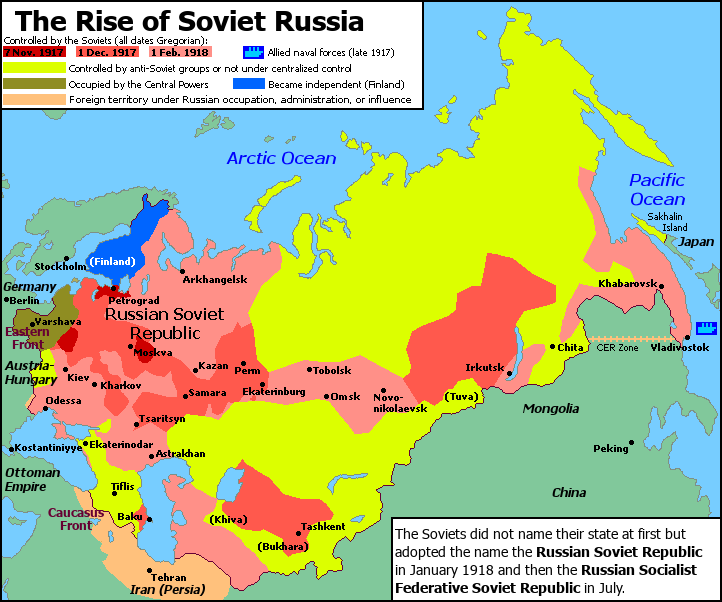
Rise of the Soviet state, 1917-1918
Soviet Russia and the USSR, 1917–1941 is a guidebook on the USSR to 22 June 1941, when Germany invaded and began what the Soviets called the Great Patriotic War of 1941–1945. It’s an end result of of this question: How could the USSR, the largest country in the world, with a huge army and air force, a large population, vast natural resources, and a robust defense industry, do so badly in the war? The USSR by itself outnumbered Nazi Germany in almost all major respects. It seemed like the Red Army should have defeated the German invasion after only a few weeks or months of fighting and then marched victoriously into the enemy homeland. I later discovered this was, in broad outline, the actual Soviet defense plan for 1941. Instead, the German invasion in 1941 thrust the USSR into an existential crisis, with repeated immense losses of soldiers, weapons, territory, and population. German strategic blunders in 1942 finally turned the tide against Germany late that year. The USSR then pushed the invaders back during the next two and half years, ending the war victoriously in Berlin in May 1945.
This guidebook covers the Soviet state from its creation in 1917 through to the eve of invasion in June 1941. It overviews all major aspect of the Soviets: ideology, politics, the government, the military, the economy, and social aspects. They were interwoven in ways that is not clear in the many works on the 1917–1941 Soviets, which often concentrate on just political-social aspects or just the military history. The many weaknesses that almost did in the Soviets are explored, as are their strengths that would allowed them to weather the crises of 1941–1942.
new!
Review of a Map of 1941 Soviet Industrial Evacuation

This supplement to the Classic Europa guidebooks contains a review and commentary on a popular Russian-language map of 1941 Soviet industrial evacuation. Find out more in the Review.
Soviet Ethnic Groups in 1941
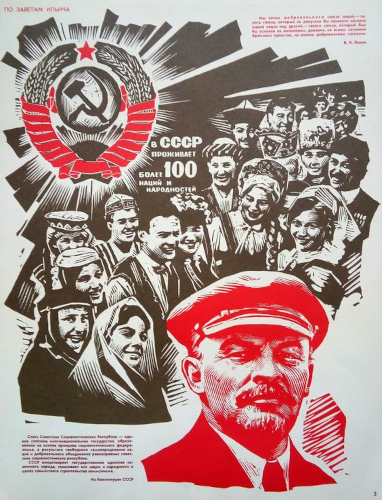
In the USSR there are more than 100 nations and peoples
This supplement to the Classic Europa guidebooks features a 1941 Soviet map of the ethnic groups of the USSR. It also covers the Soviet ethnic groups based on the 1939 Soviet census, analysis of the population gained by the Soviet annexations of 1939-40, and the languages of these ethnic groups. Find out more at Soviet Ethnic Groups in 1941.
Greater Germany
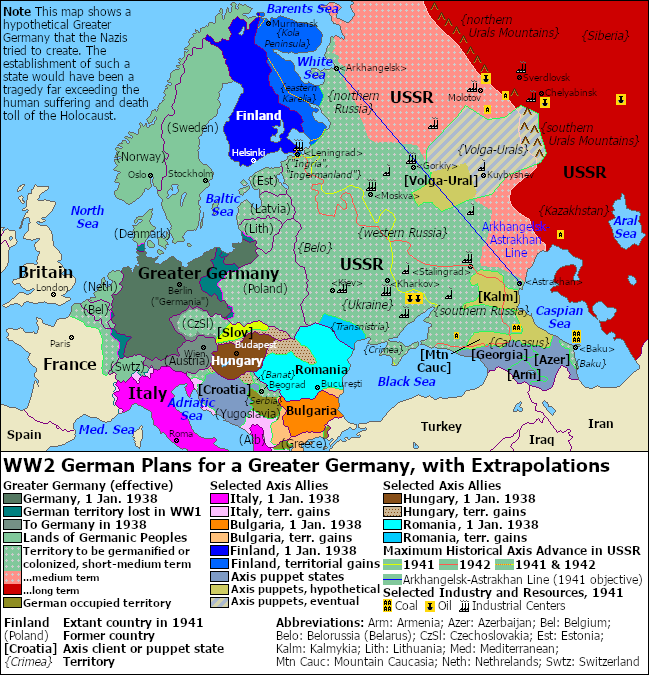
Greater Germany: A map of a hypothetical Greater Germany based on WW2 German plans and intentions, with extrapolations
This guidebook maps and explains a hypothetical Greater Germany that Nazi Germany tried to created during World War II. Find out more about this in Greater Germany, based on WW2 German plans and intentions.
Please Consider Donating
The Classic Europa website and email groups are free to use for personal use. The website currently has no charge, no subscription, no commercial advestising, no tracking cookies (or cookies at all!). However, it costs money to keep this site going and to create new articles and other content for it. Similarly, its costs money to access the useful premium features that the Classic Europa email group uses. If you would like to help keep the Classic Europa website and email group going, please consider making a small donation. Thank you!
The Renaming Revolution: Soviet City Name Changes, 1917-1945
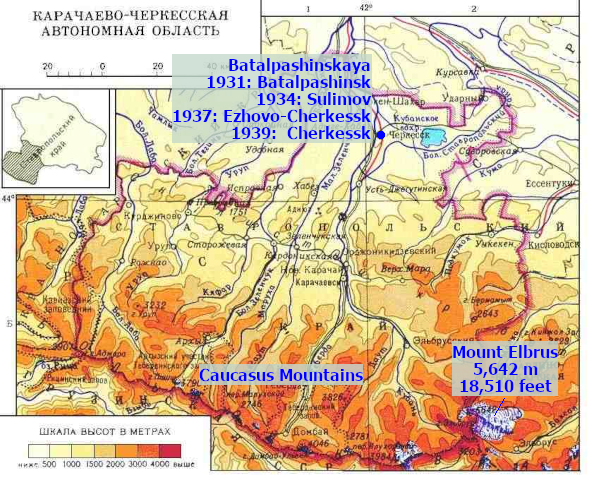
The many names of the city of Cherkessk
The Bolshevik Revolution in late 1917 saw the Soviets take over Russia, become the Communists, and attempt to remold the country and its multitudes to their repressive Marxist-Leninist agenda. Part of this molding entailed a renaming revolution. The names of many villages, towns, and cities were changed to get rid of reminders of the imperialist, religious past and to celebrate Communist ideas, heroes, and politicians. Find out more about this renaming revolution in The Renaming Revolution: Soviet City Name Changes, 1917-1945.
A Slide History of Russia and the USSR
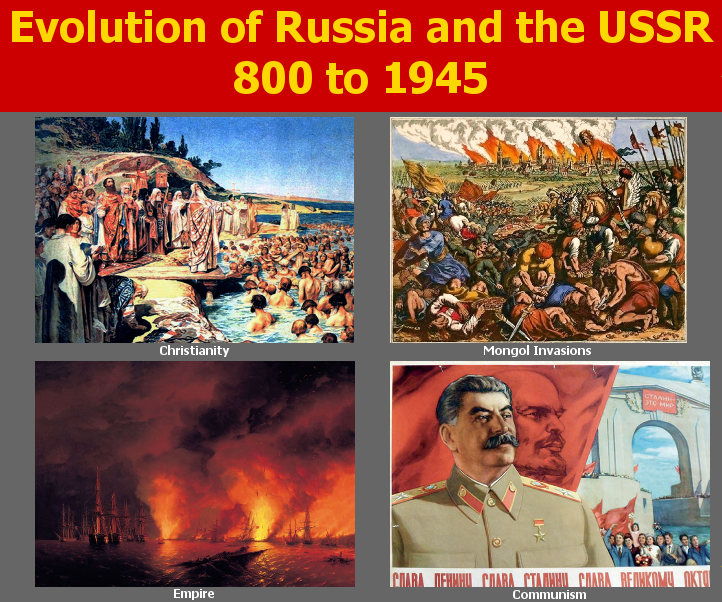
These slides sketch the history of Russia and the USSR from the rise of Kievan Rus circa 800 to the triumph of the Soviet Union in World War II in 1945. They explore history through maps, art, photographs, and brief text entries. This series is currently under development and will be updated occasionally.
Russian and Soviet Northern Ports
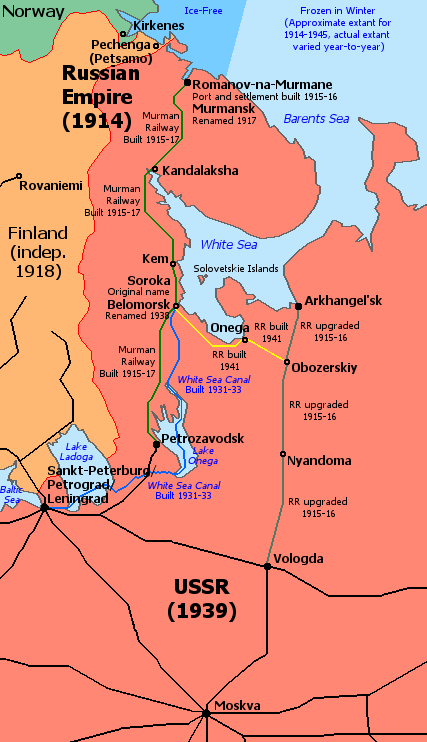
Russian and Soviet Northern Ports from the start of World War I to the end of World War II
In 1914, the Russian Empire lost the use of most of its major ports soon after the outbreak of World War I. Russia had to turn to its backwater northern ports to import vitally needed weapons, materials, and supplies for its war effort. The empire embarked on an ambitious construction project to upgrade the existing ports and rail lines as well as building a brand new port and rail line there. However, the empire fell into revolution and after a civil war was replaced by the USSR. In 1941, history echoed when Germany invaded the Soviet Union, which quickly lost the use of most of its major ports. Once again, the northern ports became a major route for weapons, materials, and supplies to reach the USSR. Find out more about these ports in Russian and Soviet Northern Ports, 1915-1945.
Dedication
 This site is dedicated to the memory of Winston Hamilton. Winston was a key supporter and promoter of the Europa series, and his company, Game Research/Design, published many of the Classic Europa titles. Winston unexpectedly passed away in the year 2000, and his many friends and many fellow Europa players miss and mourn him.
This site is dedicated to the memory of Winston Hamilton. Winston was a key supporter and promoter of the Europa series, and his company, Game Research/Design, published many of the Classic Europa titles. Winston unexpectedly passed away in the year 2000, and his many friends and many fellow Europa players miss and mourn him.
See Classic’s tribute to Winston on the Legion of Honor page. The Europa Legion of Honor is an unofficial tribute to many people who made contributions to Europa. Be sure to pay homage to the system’s founders, Rich Banner and Frank Chadwick, and do not fail to leave an offering to shrine of Winston Hamilton!
Articles and Scenarios
 This section contains full-length length articles and scenarios on a variety of topics.
This section contains full-length length articles and scenarios on a variety of topics.
Featured Scenario: Grande Fantasia Imperiale Scenario for Wavell’s War
The Grande Fantasia Imperiale Scenario is a “historical-hypothetical” scenario exploring whether, with just a few reasonable changes in policy and preparations, Italy could have wrested north-eastern Africa and the Near East from Great Britain in 1940-41. Italy’s big chance came in the spring of 1940, with France defeated and Britain’s army abandoning its modern equipment in the Dunkirk evacuation. Since Britain had begun rearming for war late, British industry needed considerable time to replace these losses. Britain itself also faced a fight for survival, as the Luftwaffe soon attacked Britain in preparation for a German amphibious invasion of the country. Never again during the war would Britain be as weak.

Designer’s Notes
 Designers’ Notes contains notes, comments, and suggestions about various Europa games by the designers of the games. These are a sample of what you can find in the Classic Europa Group.
Designers’ Notes contains notes, comments, and suggestions about various Europa games by the designers of the games. These are a sample of what you can find in the Classic Europa Group.
- First to Fight: 2-Week Turns
- War in the Desert: Operation Compass, Operation Torch, Q&A
- Surprise Offensives
- Abandoning Equipment
- Fighter Extended Range
- Guerrilla Warfare
- Iceland
- Soviet Combat Corps
- Europa Map Projection
- and more!
Classic Europa Group
 The Classic Europa Group is a Yahoo group celebrating the Classic Europa games. It has a mailing list and downloadable files, including Europa scenarios. The list is meant to be fun for its participants, so postings to the list are moderated to weed out the off-topic items and other unwanted material that unfortunately afflict unmoderated lists.
The Classic Europa Group is a Yahoo group celebrating the Classic Europa games. It has a mailing list and downloadable files, including Europa scenarios. The list is meant to be fun for its participants, so postings to the list are moderated to weed out the off-topic items and other unwanted material that unfortunately afflict unmoderated lists.
If you are interested in learning more about the group, including how to request membership, check out the group’s guidelines and rules.
Other Sites to See
 If you like Classic Europa, try out these other Europa sites:
If you like Classic Europa, try out these other Europa sites:
- Rich Velay’s Europa Guru Site. Rich was a Europa Rules Guru, and his site contains material on SF, FWTBT, and WOR.
- Second Front: Errata and Rulings. Luiz Cláudio Duarte has assembled all the SF errata and rulings he could find. Impressive!
- David H. Lippman’s World War II +55. David started a WW2 chronology on the 55th anniversary of the start of the war. It’s been in e-mail, on the web, and now is a blog. Enjoy!
- The Sentry Box. Gordon Johansen, ace Europa player, owns and manages The Sentry Box, an amazing store “for those interested in fantasy, science fiction, or military games, books and miniatures.” If you need an out of print Europa game, check with Gord first!
- Jason Long’s Sturmvogel and Panzerkeil. Jason has been researching WW2 history with emphasis on Europa for many years.
- Generalstab (General Staff). Wolfram N. Broszies’ site on Europa, military history, and more. In both English and German.
- The Europa WebRing. The Europa WebRing links to various web sites devoted to or containing information pertaining to Europa.
- Cardboard Wars. This is a blog for After Action Reports, with a replay of GDW’s Narvik being featured.
- Europa Series Background. This page, at the Wargaming Academy, is “a detailed collector’s overview of the GDW Europa Series, complete with production numbers,” compiled by Marc Miller of GDW. (A few of the numbers and dates don’t look quite right to me, but Marc compiled this from GDW’s records.)
Disclaimers: Europa is a trademark of Paul R. Banner. Classic Europa is an unofficial fan site and mailing list and neither licenses the Europa trademark nor operates with the endorsement or approval of Paul R. Banner. Various Europa materials are copyrights owned by various organizations and or individuals. Classic Europa may make some limited use of these materials for purposes of commentary and criticism, under the fair use provision of US copyright law.